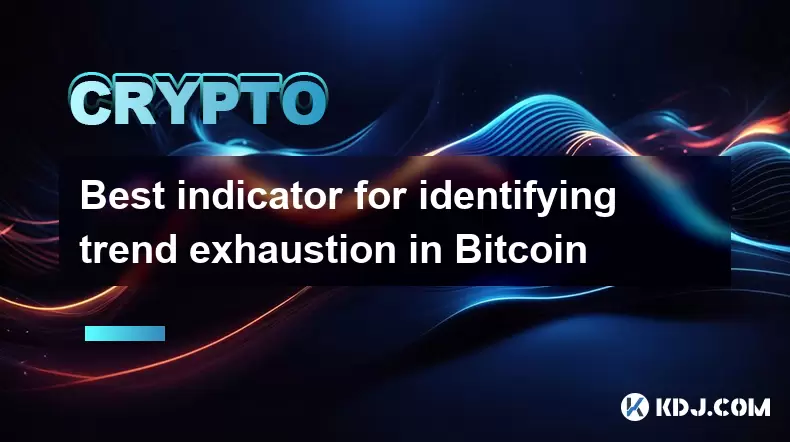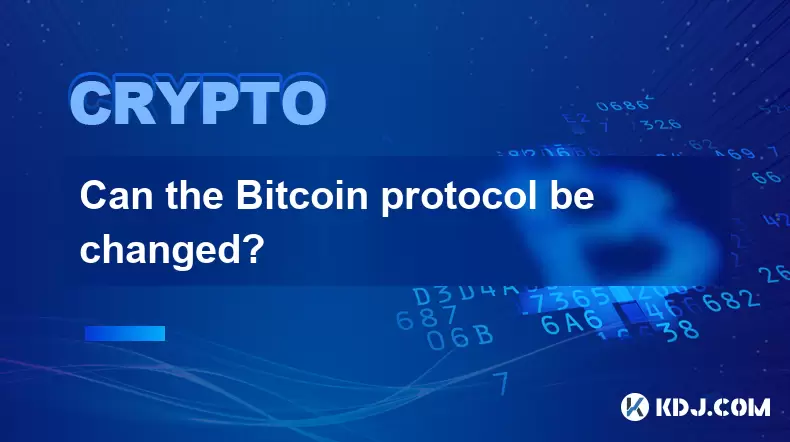-
 Bitcoin
Bitcoin $111300
-0.83% -
 Ethereum
Ethereum $4296
-0.28% -
 XRP
XRP $2.970
-0.28% -
 Tether USDt
Tether USDt $0.0000
0.01% -
 BNB
BNB $876.7
-0.13% -
 Solana
Solana $216.7
0.50% -
 USDC
USDC $0.9998
0.01% -
 Dogecoin
Dogecoin $0.2424
1.50% -
 TRON
TRON $0.3345
0.88% -
 Cardano
Cardano $0.8635
0.03% -
 Hyperliquid
Hyperliquid $53.38
5.54% -
 Chainlink
Chainlink $23.07
0.27% -
 Ethena USDe
Ethena USDe $1.001
0.02% -
 Sui
Sui $3.463
-0.21% -
 Stellar
Stellar $0.3738
-0.33% -
 Bitcoin Cash
Bitcoin Cash $578.5
-1.51% -
 Avalanche
Avalanche $26.00
2.07% -
 Hedera
Hedera $0.2276
0.77% -
 UNUS SED LEO
UNUS SED LEO $9.548
0.02% -
 Cronos
Cronos $0.2597
2.73% -
 Litecoin
Litecoin $112.0
-0.64% -
 Toncoin
Toncoin $3.089
-0.29% -
 Shiba Inu
Shiba Inu $0.00001285
-0.10% -
 Polkadot
Polkadot $4.098
1.54% -
 Uniswap
Uniswap $9.484
-0.88% -
 Ethena
Ethena $0.8361
8.06% -
 Dai
Dai $0.9998
0.01% -
 Monero
Monero $269.5
-0.68% -
 World Liberty Financial
World Liberty Financial $0.1994
-4.02% -
 Aave
Aave $299.1
-1.29%
Best indicator for identifying trend exhaustion in Bitcoin
Bitcoin trend exhaustion can signal potential reversals, often identified through technical indicators like RSI, MACD, and volume patterns.
Jul 08, 2025 at 09:36 am

Understanding Trend Exhaustion in Bitcoin
Trend exhaustion refers to a situation where the momentum behind a price movement, whether upward or downward, begins to fade. In the context of Bitcoin, this often signals a potential reversal or consolidation phase. Identifying trend exhaustion is crucial for traders and investors who want to avoid entering positions at the tail end of a strong move. The key lies in recognizing patterns or technical signals that indicate weakening momentum.
One of the most reliable ways to detect trend exhaustion is through the use of technical indicators. These tools help quantify market sentiment and provide visual cues on charts. However, not all indicators are equally effective when it comes to identifying when a trend is losing steam.
Relative Strength Index (RSI) as an Exhaustion Signal
The Relative Strength Index (RSI) is one of the most widely used oscillators for detecting overbought or oversold conditions in an asset. When applied to Bitcoin, RSI can serve as a powerful tool to identify potential trend exhaustion points.
- RSI above 70 typically indicates overbought conditions, suggesting that buying pressure may be waning.
- Conversely, RSI below 30 signals oversold territory, indicating that selling pressure might be near exhaustion.
However, simply observing these levels isn't enough. Traders should look for divergences between price action and RSI. For instance, if Bitcoin makes a new high but RSI fails to surpass its previous peak, this could signal that the uptrend is losing strength.
Additionally, failure swings—a concept within RSI analysis—can further confirm exhaustion. A failure swing occurs when RSI breaks out of an overbought or oversold zone and then retests it without confirming the breakout, signaling a likely reversal.
MACD Histogram and Momentum Shifts
The Moving Average Convergence Divergence (MACD) histogram is another valuable tool for spotting trend exhaustion in Bitcoin. Unlike the standard MACD line and signal line crossovers, the histogram provides a more nuanced view of momentum changes.
- The histogram measures the distance between the MACD line and the signal line.
- When the bars grow shorter after a strong trend, it suggests that momentum is decreasing.
- A flattening or shrinking histogram during an uptrend or downtrend can indicate that the current move is nearing its end.
Traders should pay attention to zero-line crossovers as well. If the histogram crosses from positive to negative territory during an uptrend, it could mean that bulls are losing control. Similarly, a cross from negative to positive during a downtrend may suggest that bears are giving way.
Volume Profile and Order Flow Analysis
While traditional technical indicators are useful, volume profile and order flow analysis offer deeper insights into Bitcoin's trend exhaustion points. Volume is a leading indicator that reflects market participation and conviction.
- Volume-by-price profiles show where the most trading activity has occurred, helping identify areas of value and potential reversals.
- During a strong uptrend, if volume starts to dry up despite rising prices, it may indicate that buyers are becoming hesitant—a classic sign of trend exhaustion.
- Conversely, during a downtrend, spiking volume with little price movement can suggest that sellers are exhausting their positions.
Order flow tools such as market depth and order book heatmaps allow traders to see real-time shifts in supply and demand. These tools are particularly useful in volatile markets like Bitcoin, where sudden surges or collapses can occur due to large institutional orders.
Fibonacci Retracement and Extension Levels
Fibonacci retracement and extension levels are derived from the Fibonacci sequence and are commonly used by traders to identify potential reversal or continuation zones. In the case of Bitcoin, these levels often act as self-fulfilling prophecies due to widespread adoption among technical analysts.
- After a strong rally or sell-off, retracements to key Fibonacci levels (like 38.2%, 50%, or 61.8%) can indicate where support or resistance might emerge.
- More importantly, extension levels (like 161.8% or 261.8%) can highlight where the current trend may run out of steam.
- If price approaches an extension level and shows signs of rejection, such as long wicks or bearish candlestick patterns, it may signal trend exhaustion.
These levels work best when combined with other indicators like RSI or MACD to confirm the likelihood of a reversal or consolidation.
Combining Indicators for Better Accuracy
No single indicator is foolproof when analyzing trend exhaustion in Bitcoin. Combining multiple tools increases the probability of accurately identifying when a trend is about to stall or reverse.
For example:
- Use RSI divergence alongside MACD histogram contraction to spot weakening momentum.
- Confirm suspected exhaustion zones using Fibonacci extensions and volume profile spikes.
- Cross-reference order flow data with chart patterns like head and shoulders or double tops/bottoms.
By layering different types of analysis, traders can filter out false signals and gain a clearer picture of Bitcoin’s potential turning points.
FAQ: Frequently Asked Questions
Q: Can trend exhaustion indicators be used across different timeframes?Yes, indicators like RSI, MACD, and Fibonacci levels can be applied to various timeframes—from intraday charts to weekly ones. However, longer timeframes tend to produce more reliable signals due to reduced noise and increased institutional participation.
Q: Is it possible for Bitcoin to remain overbought or oversold for extended periods?Absolutely. During strong trends, especially in highly volatile assets like Bitcoin, the RSI can stay in overbought (above 70) or oversold (below 30) territory for days or even weeks. This is why divergence and other confluence factors are essential for accurate readings.
Q: How do I differentiate between a healthy pullback and trend exhaustion?A healthy pullback usually maintains volume and doesn’t break critical support/resistance levels. In contrast, trend exhaustion often coincides with declining volume, sharp reversals, and divergences on momentum indicators.
Q: Are there any specific candlestick patterns that signal trend exhaustion?Yes, patterns such as shooting stars, hammers, engulfing candles, and doji formations can indicate weakening momentum when they appear at extreme price levels or key Fibonacci zones.
Disclaimer:info@kdj.com
The information provided is not trading advice. kdj.com does not assume any responsibility for any investments made based on the information provided in this article. Cryptocurrencies are highly volatile and it is highly recommended that you invest with caution after thorough research!
If you believe that the content used on this website infringes your copyright, please contact us immediately (info@kdj.com) and we will delete it promptly.
- Cardano, Ethereum, and Hoskinson: Navigating the Crypto Landscape
- 2025-09-10 02:25:14
- Bitcoin Price Stays Steady as Whales Eye Rollblock's Accumulation Growth
- 2025-09-10 02:25:14
- Bitcoin, Solana, Ethereum: Navigating the Crypto Landscape in 2025
- 2025-09-10 02:30:12
- VivoPower, Tembo, and RLUSD: Driving Innovation in Electric Vehicles with Blockchain Finance
- 2025-09-10 02:45:12
- Render Price Chart Analysis: Is a Double-Digit Comeback on the Horizon?
- 2025-09-10 02:45:12
- Dogecoin ETF Buzz Fuels Price Surge: To the Moon?
- 2025-09-10 02:30:12
Related knowledge

Why is Bitcoin considered a revolutionary technology?
Aug 12,2025 at 08:29pm
Decentralization and the Elimination of Central AuthoritiesThe core innovation behind Bitcoin lies in its decentralized architecture, which fundamenta...

Why is Bitcoin considered a revolutionary technology?
Aug 10,2025 at 07:42pm
Decentralized Architecture and Trustless TransactionsBitcoin is considered revolutionary because it introduced a decentralized architecture that opera...

What are the key features of Bitcoin?
Aug 10,2025 at 02:50am
Decentralization and Peer-to-Peer NetworkOne of the most defining characteristics of Bitcoin is its decentralized nature. Unlike traditional financial...

Can the Bitcoin protocol be changed?
Aug 07,2025 at 01:16pm
Understanding the Bitcoin ProtocolThe Bitcoin protocol is the foundational set of rules that govern how the Bitcoin network operates. It defines every...

Can the Bitcoin protocol be changed?
Aug 11,2025 at 01:01am
Understanding the Bitcoin Protocol StructureThe Bitcoin protocol is the foundational set of rules that govern how the Bitcoin network operates. These ...

What happens to Bitcoin transactions once they are confirmed?
Aug 09,2025 at 05:22am
Understanding Bitcoin Transaction ConfirmationWhen a Bitcoin transaction is initiated, it is broadcast to the network and placed in a pool of unconfir...

Why is Bitcoin considered a revolutionary technology?
Aug 12,2025 at 08:29pm
Decentralization and the Elimination of Central AuthoritiesThe core innovation behind Bitcoin lies in its decentralized architecture, which fundamenta...

Why is Bitcoin considered a revolutionary technology?
Aug 10,2025 at 07:42pm
Decentralized Architecture and Trustless TransactionsBitcoin is considered revolutionary because it introduced a decentralized architecture that opera...

What are the key features of Bitcoin?
Aug 10,2025 at 02:50am
Decentralization and Peer-to-Peer NetworkOne of the most defining characteristics of Bitcoin is its decentralized nature. Unlike traditional financial...

Can the Bitcoin protocol be changed?
Aug 07,2025 at 01:16pm
Understanding the Bitcoin ProtocolThe Bitcoin protocol is the foundational set of rules that govern how the Bitcoin network operates. It defines every...

Can the Bitcoin protocol be changed?
Aug 11,2025 at 01:01am
Understanding the Bitcoin Protocol StructureThe Bitcoin protocol is the foundational set of rules that govern how the Bitcoin network operates. These ...

What happens to Bitcoin transactions once they are confirmed?
Aug 09,2025 at 05:22am
Understanding Bitcoin Transaction ConfirmationWhen a Bitcoin transaction is initiated, it is broadcast to the network and placed in a pool of unconfir...
See all articles
























































































